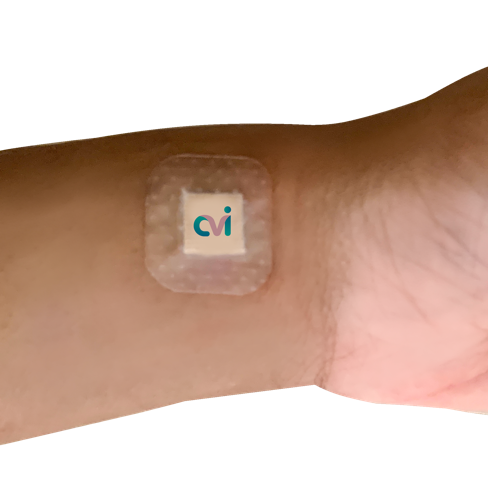Important Facts on Fertility and Pregnancy
Uterine fibroids are non-cancerous, muscular growths that develop in the wall of the uterus (womb). They are often present in young women during childbearing years and can affect nearly 3 out of 4 women.1 Many uterine fibroids remain undetected because they do not cause any symptoms. However, fibroids can sometimes cause pain and heavy menstrual bleeding.
Uterine fibroids, which are also called leiomyomas, do not increase the risk of cancer. But when a woman of childbearing age is diagnosed with one or more fibroids in her uterus, fertility and pregnancy-related questions are at the top of her mind. Will the fibroids affect my fertility? Can I deliver a healthy baby? Do my fibroids put me at risk of miscarriage? Will my baby need to be delivered by C-section?
Impact of Fibroids on Fertility
Fibroids are present in up to 10% of infertile women2 and are sometimes the cause of the infertility. This does not mean all women with fibroids will be infertile. Fibroids may or may not affect your fertility depending on their size and location.
Large fibroids (more than 6 cm in size) can reduce your chances of becoming pregnant by:2
- Blocking the fallopian tubes (the tubes through which the egg makes its way from the ovaries to the uterus).
- Changing the shape of the cervix (this can influence the entry of sperm into the uterus).
- Compromising the lining of the uterine cavity (this can decrease the chances of the embryo attaching firmly to the uterine wall).
The location of the fibroids can also affect your likelihood of conceiving. Submucosal fibroids (which are present in the inner layer of the uterine wall) can distort the shape of the uterus and interfere with embryo implantation. Other types of fibroids usually have a small or negligible impact on fertility.2
If you have been unsuccessfully trying to get pregnant and your doctors suspect fibroids could be the reason, treating the fibroids can significantly increase your chances of becoming pregnant.2
Two well-known approaches to uterine fibroid treatment include a non-surgical procedure known as uterine fibroid embolization (UFE) and surgical removal of fibroids, which is called myomectomy.
Uterine Fibroid Embolization (UFE) and Fertility
One out of four women with uterine fibroids experiences problems related to fertility.3 In such women, the chances of conception can be increased by treating the fibroids. Uterine fibroid embolization (UFE) is one of the treatment options available to women with fibroids. During the UFE procedure, the blood supply to the fibroids is cut off by placing tiny beads in the uterine arteries. This causes the fibroids to shrink and die while the blood flow to the uterus is preserved.
Studies have shown that UFE can restore fertility in a significant percentage of women with uterine fibroids.3 One study, which enrolled 359 women, found that roughly 40% of the patients become pregnant following UFE, some more than once, for a total of 150 live births in the 2 years following UFE treatment. For 85% of the women, it was their first pregnancy. Nearly 30% of the women conceived spontaneously within one year of the UFE procedure. Almost 80% had resolution of fibroid-related symptoms.3
Other studies have found that women who undergo uterine fibroid embolization have a subsequent fertility rate of 58%, which is marginally superior to the 57% fertility rate achieved with myomectomy (surgical removal of fibroids).9 It is worth noting, however, that UFE is a considerably less invasive option compared to myomectomy. Also, myomectomy is not always possible or effective and can result in major complications, including hysterectomy (surgical removal of the uterus).3 This can occur when a uterus contains numerous (10+) fibroids, as this becomes a more complex and difficult surgery with greater blood loss. Often times not all of the fibroids can be removed in this setting either, which can cause persistent fertility issues.
In women who undergo UFE, problems during pregnancy and delivery are no more common than in healthy women without fibroids.5 However, UFE is sometimes implicated in complications such as miscarriage, low birth weight, and prematurity, although these are extremely rare.4 In the experienced hands patients have preserved uterine function and blood flow.
As noted, pregnant women are at risk of complications due to fibroids. The risk of needing a C-section is 6 times higher in women with fibroids.6 Uterine fibroids can lead to miscarriage, breech baby, failure of labor to progress, and preterm labor. The risk of pregnancy loss is higher with submucosal and intramural fibroids.2 Larger fibroids (more than 3 cm in size) are associated with a higher risk of pregnancy complications.2 Women who are contemplating pregnancy can reduce these risks by getting treatment for their fibroids with uterine fibroid embolization.
Read the research findings (click here).
Myomectomy and Fertility
Myomectomy is a common treatment for uterine fibroids. It involves surgical removal of the fibroids from the uterus. Myomectomy can be performed in several ways, depending on the number, size, and location of your fibroids. This is not ideal for someone with numerous (10+) fibroids as each fibroid requires a separate incision of the uterus. Too many incisions will result in life threatening blood loss and loss of the uterus if it cannot be repaired. Patients with numerous fibroids who undergo myomectomy can have persistent fertility issues as a number of fibroids are left behind.
Some patients with smaller and fewer fibroids may be candidates for laparoscopic (minimally-invasive) myomectomy, but many women require open abdominal surgery.
One of the potential complications of myomectomy is a rupture of the uterus during pregnancy or labor.8 Roughly 5% of women who undergo myomectomy suffer this complication. Some patients can have severe bleeding during cesarean delivery requiring a hysterectomy or embolization. The fear of uterine rupture is the reason for a high rate of cesarean sections in pregnant patients who underwent myomectomy for fibroid treatment.8
Benefits of Non-Surgical UFE Treatment
Uterine fibroid embolization (UFE) is a minimally-invasive, non-surgical treatment for uterine fibroids. It is a safe and effective alternative to surgery and is performed by an interventional radiologist. Some of the benefits of UFE include:
- Treatment is through the blood vessels to the fibroid, which means no cutting or burning the uterus itself.
- UFE is less invasive than myomectomy and leaves no scar.
- Fibroids are up to 40% smaller after UFE in 6 months on average.10
- More than 90% of women experience an improvement in fibroid size-related symptoms one year after UFE.11
- UFE has a lower risk of bleeding and infection compared to a surgical procedure like myomectomy.
- UFE is an ideal procedure for someone with numerous fibroids as it can target all of the fibroids. It is not always possible to remove all the fibroids with myomectomy.
- UFE can be performed on an outpatient basis and requires no hospital stay.
- Recovery from UFE is relatively quick and most women can return to regular activities in 1 week.
- Our interventional radiologist has had experience with many fibroid patients trying to preserve their fertility.

Making the Decision That’s Right for You
If you’ve been diagnosed with uterine fibroids and are concerned about fertility and pregnancy, it’s important to gain at least a basic understanding of your risks and treatment options. Every approach to uterine fibroid treatment has its pros and cons. Ultimately, the treatment you choose will depend on what your doctor recommends and what feels right to you.
To further understand the effects of fibroids on your fertility and pregnancy, seek the expert advice of our interventional radiologist and your OB/GYN.

Why California Fibroid Center?
At CVI, we provide devoted and specialized care for embolization. All clinical decisions are centered on the patient because CVI is owned and controlled by our physician, who is an embolization expert. The doctor has the freedom to spend as much time as needed for patient consultations and medical procedures. Clinical decisions are made based on what is best for you and your treatment, and not influenced by the interests of a profit-driven hedge fund company. The staff are highly trained and dedicated to the patient experience. This allows us to provide the best care and experience for our patients.
Women continue to be thrilled with the totality of their care experience facilitated by our patient-centered approach. Read more about our practice here.
Patient Centered. Dedicated. Comprehensive.
We are Here to Help
Request an appointment to meet with our fibroid specialist who will review your imaging, labs and history to determine if you are candidate for the procedure, and the outcomes you can expect. Each woman is an individual and should discuss the potential risks and benefits of fibroid embolization and other Treatments with our doctor to decide which option is best for her.
Appointments are available via an online video telehealth platform or in person at one of the offices in Los Angeles, Orange County or San Diego. Why should you choose us? Read here.
1.) Cramer SF, Patel A. The frequency of uterine leiomyomas. Am J Clin Pathol. 1990;94(4):435-438. doi:10.1093/ajcp/94.4.435 https://pubmed.ncbi.nlm.nih.gov/2220671/
2.) Guo XC, Segars JH. The impact and management of fibroids for fertility: an evidence-based approach. Obstet Gynecol Clin North Am. 2012;39(4):521-533. doi:10.1016/j.ogc.2012.09.005 https://www.ncbi.nlm.nih.gov/pmc/articles/PMC3608270/
3.) Uterine Fibroid Embolization Helps Restore Fertility Page 1 of 3 RSNA.org Copyright © 2020 Radiological Society of North America (RSNA) https://press.rsna.org/timssnet/media/pressreleases/14_pr_target.cfm?ID=1951
4.) Ludwig PE, Huff TJ, Shanahan MM, Stavas JM. Pregnancy success and outcomes after uterine fibroid embolization: updated review of published literature. Br J Radiol. 2020;93(1105):20190551. doi:10.1259/bjr.20190551 https://pubmed.ncbi.nlm.nih.gov/31573326/
5.) McLucas B, Goodwin S, Adler L, Rappaport A, Reed R, Perrella R. Pregnancy following uterine fibroid embolization. Int J Gynaecol Obstet. 2001;74(1):1-7. doi:10.1016/s0020-7292(01)00405-2 https://pubmed.ncbi.nlm.nih.gov/11430934/
6.) US Department of Health & Human Services. Office on Women’s Health. Uterine Fibroids.
7.) De Vivo A, Mancuso A, Giacobbe A, et al. Uterine myomas during pregnancy: a longitudinal sonographic study. Ultrasound Obstet Gynecol. 2011;37(3):361-365. doi:10.1002/uog.8826 https://pubmed.ncbi.nlm.nih.gov/20922776/
8.) Desai P, Patel P. Fibroids, infertility and laparoscopic myomectomy. J Gynecol Endosc Surg. 2011;2(1):36-42. doi:10.4103/0974-1216.85280 https://www.ncbi.nlm.nih.gov/pmc/articles/PMC3304294/
9.) SIR: Pregnancy Possible After Fibroid Embolization https://www.medpagetoday.org/meetingcoverage/sir/19034
10.) Torre A, Paillusson B, Fain V, Labauge P, Pelage JP, Fauconnier A. Uterine artery embolization for severe symptomatic fibroids: effects on fertility and symptoms. Hum Reprod. 2014;29(3):490-501. doi:10.1093/humrep/det459
11.) Spies JB. Current evidence on uterine embolization for fibroids. Semin Intervent Radiol. 2013;30(4):340-346. doi:10.1055/s-0033-1359727









